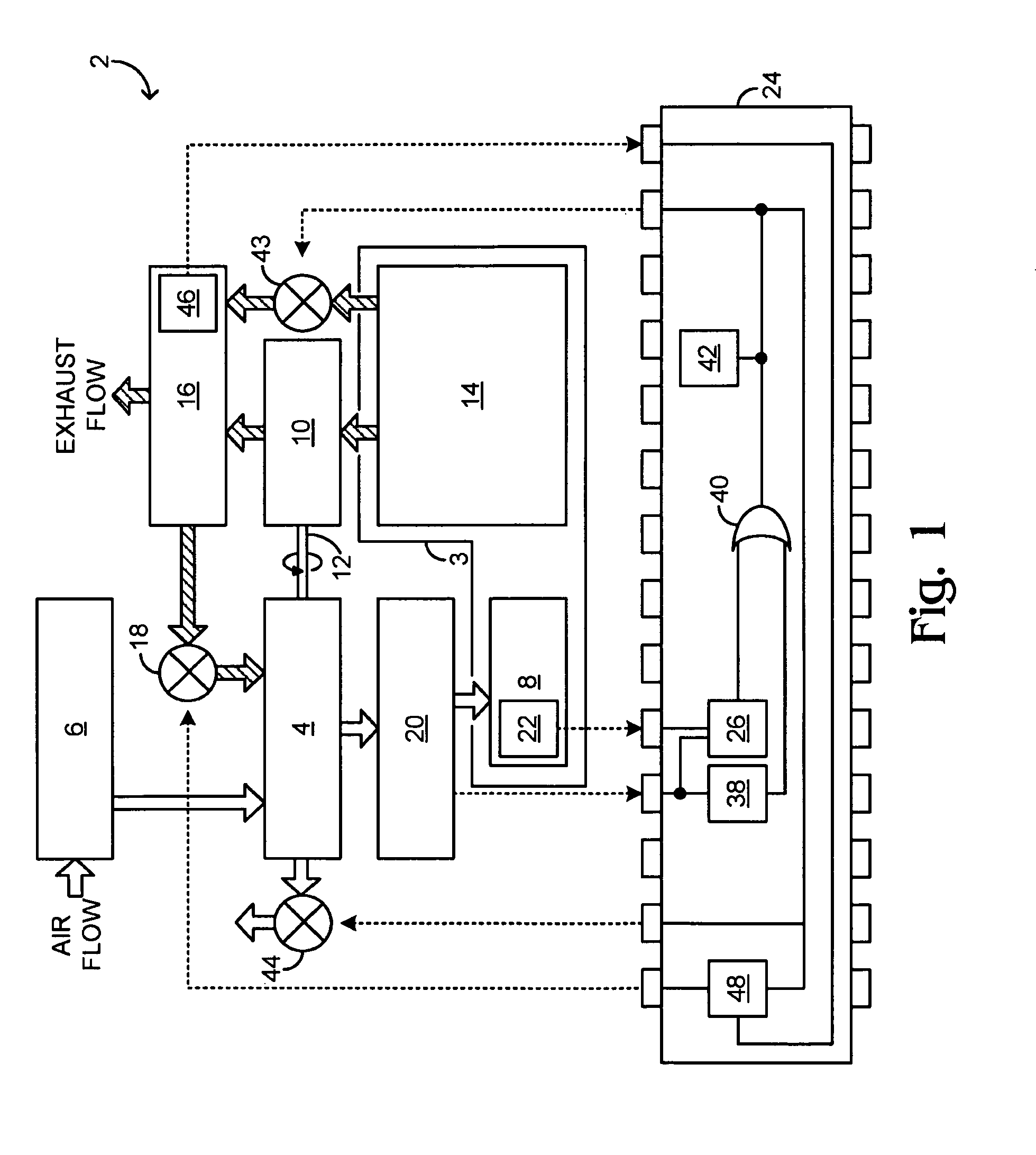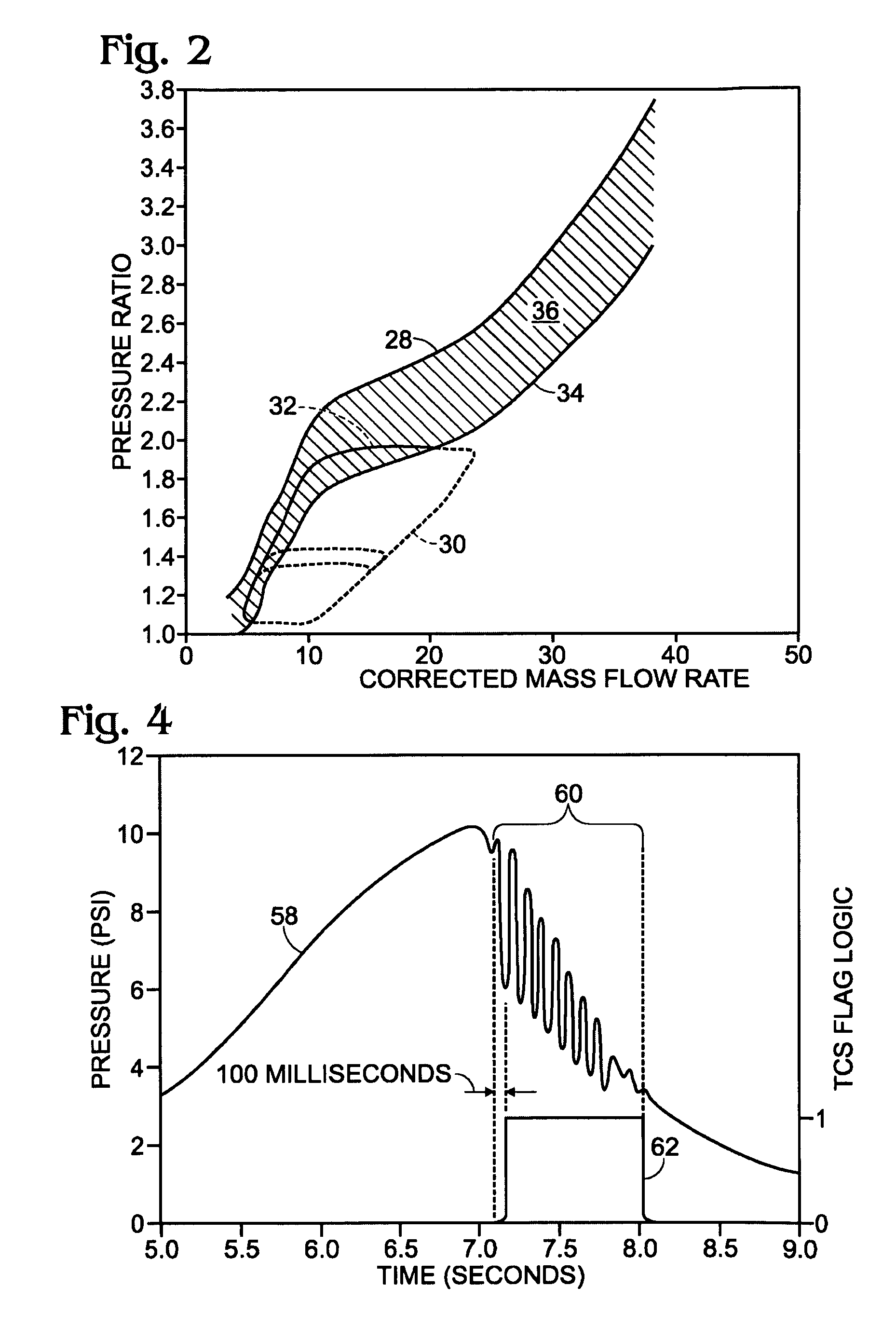Transient compressor surge response for a turbocharged engine
a turbocharged engine and compressor technology, applied in combustion engines, machines/engines, electric control, etc., can solve the problems of poor response and emissions characteristics, undesirable stresses in the turbocharger and the intake, and the turbocharger compressor coupled to the internal combustion engine may be subject to unwanted surge, etc., to increase the power output of the internal combustion engine, increase the mass of air, and increase the effect of power
- Summary
- Abstract
- Description
- Claims
- Application Information
AI Technical Summary
Benefits of technology
Problems solved by technology
Method used
Image
Examples
Embodiment Construction
[0015]FIG. 1 shows in schematic detail an example engine system 2 including and engine 3, which may be disposed in a motor vehicle. The engine system includes turbocharger compressor 4, which is configured to draw air from air cleaner 6 and to provide pressurized air to intake manifold 8. The turbocharger compressor is mechanically coupled to and driven by turbocharger turbine 10 via shaft 12. The turbocharger turbine derives mechanical power from hot engine exhaust conducted therethrough. Accordingly, turbocharger turbine 10 is configured to admit engine exhaust from exahaust manifold 14, and to route the engine exhaust (at a lower temperature and pressure) to exhaust passage 16.
[0016]Engine system 2 further includes exhaust-gas recirculation (EGR) valve 18, which is an electronically controllable valve configured to controllably admit engine exhaust from the exhaust passage to turbocharger compressor 4. Thus, the illustrated engine system embodies a so-called ‘low-pressure EGR’ st...
PUM
 Login to View More
Login to View More Abstract
Description
Claims
Application Information
 Login to View More
Login to View More - R&D
- Intellectual Property
- Life Sciences
- Materials
- Tech Scout
- Unparalleled Data Quality
- Higher Quality Content
- 60% Fewer Hallucinations
Browse by: Latest US Patents, China's latest patents, Technical Efficacy Thesaurus, Application Domain, Technology Topic, Popular Technical Reports.
© 2025 PatSnap. All rights reserved.Legal|Privacy policy|Modern Slavery Act Transparency Statement|Sitemap|About US| Contact US: help@patsnap.com



